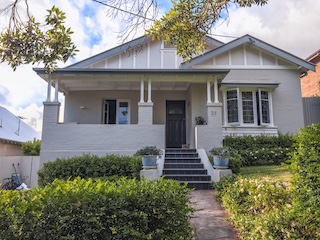Mill Park suburb profile
Mill Park is a vibrant suburb located 19km northeast of Melbourne's CBD, known for its family-friendly atmosphere and community spirit. The area offers a mix of residential options, from spacious family homes to modern townhouses, catering to diverse lifestyles. Mill Park is well-served by amenities, including shopping centers like Westfield Plenty Valley, schools, and recreational facilities. The suburb is also home to beautiful parks and reserves, providing ample green spaces for outdoor activities. With convenient access to public transport and major roads, Mill Park is an attractive choice for those seeking a balanced suburban lifestyle with easy city access.
Mill Park property market performance
Current median dwelling price$673,500Past 3 months
Property growth-0.5%Past 12 months
Mill Park’s property market has shown modest growth over the past 12 months. House values have increased by 2.7%, bringing the median house price to $836,000, while unit values have remained stable with a median price of $514,000. This indicates a steady demand for houses in the area.
Sales activity has been relatively active, with 60 houses and 12 units sold over the last 12 months. Houses are selling faster, with a median of 32 days on the market, compared to 68 days for units, suggesting a stronger demand for houses.
The rental market in Mill Park has experienced notable increases, with house rents rising by 10% and unit rents by 6.7% over the past year. The average rent for houses is $550, while units average $475, reflecting a healthy rental demand in the suburb.
| Houses | Units | |
|---|---|---|
Median price Past 3 months | $833K | N/A |
Change in value Past 12 months | 3.5% | -4.5% |
Sold Past 3 months | 28 | 5 |
Median days on market Past 12 months | 37 | 60 |
Average rent Past 12 months | $550 | $480 |
Change in rent Past 12 months | 10.0% | 6.7% |
5 year median price trend for houses and units
Mill Park demographics
Mill Park, located in Melbourne's northern suburbs, is a family-friendly area known for its community-oriented atmosphere and convenient amenities. With a population of 28,712, the suburb offers a balanced lifestyle that appeals to both families and professionals. The median age of 40 suggests a mature community, with many residents enjoying the suburb's parks, schools, and shopping centers.
The suburb's housing landscape is characterized by a high rate of home ownership, with 39.8% of properties owned outright and 36.9% owned with a mortgage. This indicates a stable community with long-term residents who have invested in the area. The rental market, comprising 23.3% of properties, provides options for those seeking flexibility, including young families and professionals.
Family life is a significant aspect of Mill Park, with 49.4% of households being couple families with children, and 33.0% being couple families without children. The presence of one-parent families, making up 16.1% of households, adds to the suburb's diverse family dynamics. Mill Park's appeal lies in its blend of suburban tranquility and accessibility to Melbourne's urban offerings, making it an attractive choice for those seeking a balanced lifestyle.
Mill Park infrastructure, key developments and investment opportunities
Mill Park is experiencing several developments that could impact its property market. The recent $25 million renovation of the Mill Park Leisure Centre, completed in 2021, has significantly enhanced local recreational facilities, potentially increasing the area's appeal to families and fitness enthusiasts. Additionally, the ongoing expansion of the Mill Park Lakes neighborhood in the northeast is introducing new housing options and potentially attracting more residents to the area.
The suburb benefits from its proximity to educational institutions, including RMIT University's Bundoora East Campus and various primary and secondary schools, which continue to draw families to the area. Mill Park's well-established parks, shared paths like the Hendersons Road Drain Trail and Darebin Creek Trail, and the pollution-control wetlands bordering the Plenty River contribute to its livability. These features, combined with the suburb's family-friendly atmosphere and relatively affordable housing compared to inner Melbourne suburbs, are likely to sustain steady demand for properties in Mill Park.
Mill Park rental market trends
The rental market in Mill Park has experienced steady growth, with house rents increasing 10% over the past year to $550 per week, while unit rents have risen 6.7% to $475 per week. With its appealing suburban lifestyle and proximity to essential amenities, Mill Park continues to attract both renters and investors seeking stable returns and a family-friendly environment.
Suburbs near Mill Park
Some popular suburbs near Mill Park include:
How does Mill Park compare to nearby suburbs?
- Median house prices: Mill Park’s median house price is 9.5% higher than South Morang’s.
- Median unit prices: Mill Park’s median unit price is 8.0% higher than Epping’s.
- House price growth: Over the past 12 months, house prices in Mill Park have grown 2.0% higher than in Epping.
- Unit price growth: Over the past 12 months, unit prices in Mill Park have grown 2.6% higher than in South Morang.
- Selling speed for houses: Properties in Mill Park are selling 17.8% faster than in South Morang.
- Selling speed for units: Properties in Mill Park are selling 33.3% faster than in Bundoora.
- Investment considerations: In Mill Park, the rental yield for house is 11.0% lower than the Melbourne average, while the rental yield for units is 14.4% lower.
- House price growth: Over the past 12 months, house prices in Mill Park have grown 20.2% lower than the average rate of growth across Melbourne.
- Unit price growth:Over the past 12 months, unit prices in Mill Park have grown 14.7% lower than the average rate of growth for units across Melbourne.

